More than $29 million in prize money is on the line this week in The International 2017, a tournament for the video game Dota 2 that can leave new spectators baffled. We’re here to help, in case you want to watch one of these matches and be able to tell a core from a support, or just want to be able to enjoy what’s actually an intense, exciting, but often inscrutable competitive experience.
Image credit: Valve/Flickr
This is a guide to Dota for the average spectator, either someone who comes in with some faint understanding of concepts, possibly having played an adjacent game like League of Legends before, or someone who has never played a game like Dota 2. We won’t teach you how to play the game — there are better tools out there for that anyways — but we can help you know what to look, listen and cheer for when gameday rolls around.
What you need to know from the outset is that Dota 2 is a five-on-five game in which players fight from opposite ends of a large field, with the goal of destroying the other team’s Ancient. As a match unfolds, each player’s character unlocks more and more powerful abilities, intensifying the action and escalating the scale until it moves from minor conflicts and concentrated skirmishes to full-blown, five-on-five team battles.
How to Watch
The tournament will stream on the Dota 2 Twitch channel, where one stream will take you through the action over the coming week. The schedule is on the Dota 2 website, and results are kept up-to-date in the Dota 2 client. If you’re looking for a really friendly ease into the games, several commentators are running a Newcomer’s Stream, which will spend more time discussing specific items, builds and strategies for those new to watching Dota 2.
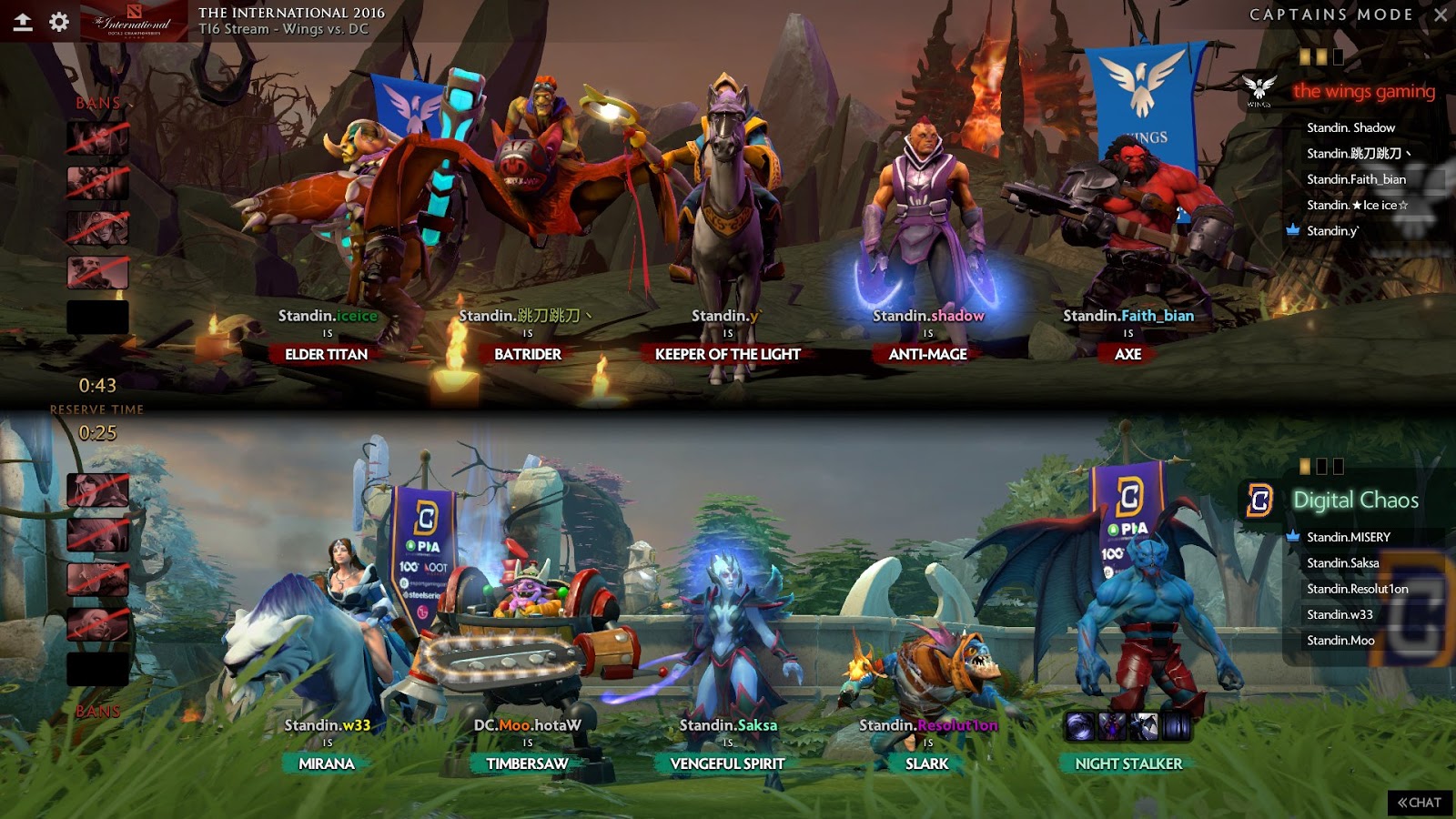
Hero select
Before the game even starts, the two teams are already competing in a separate, smaller game: The draft. Dota 2 has a pool of 113 heroes, and each team needs to select five from that pool, one for each player, to field. The pick-and-ban phase goes back and forth, with each team banning heroes they don’t want available and picking heroes they want. Roles and picks tend to vary depending on who plays who, but each team will generally look for two cores, two supports, and one flexible position called the “offlane”, which sits in between.
Each hero brings certain strengths and weaknesses to the table. Phantom Assassin can rip apart weak heroes with her daggers and critical strikes, but struggles against magic damage. Crystal Maiden has immense utility, but is slow and vulnerable. Some heroes, such as Enigma or Tidehunter, rely on their ultimate abilities to make an impact, while others are more focused on constant damage output with less immediate impact.
The commentators and analysts do a good job highlighting heroes that are often in contention, so keep track of certain trends. At one International, Naga Siren was constantly contested, and in another, Wisp was the crux of several team’s strategies. Some heroes, such as Drow Ranger, will have teams built around their specific abilities. Note those big picks that commentators keep coming back to, and keep an eye on them as the real game starts.
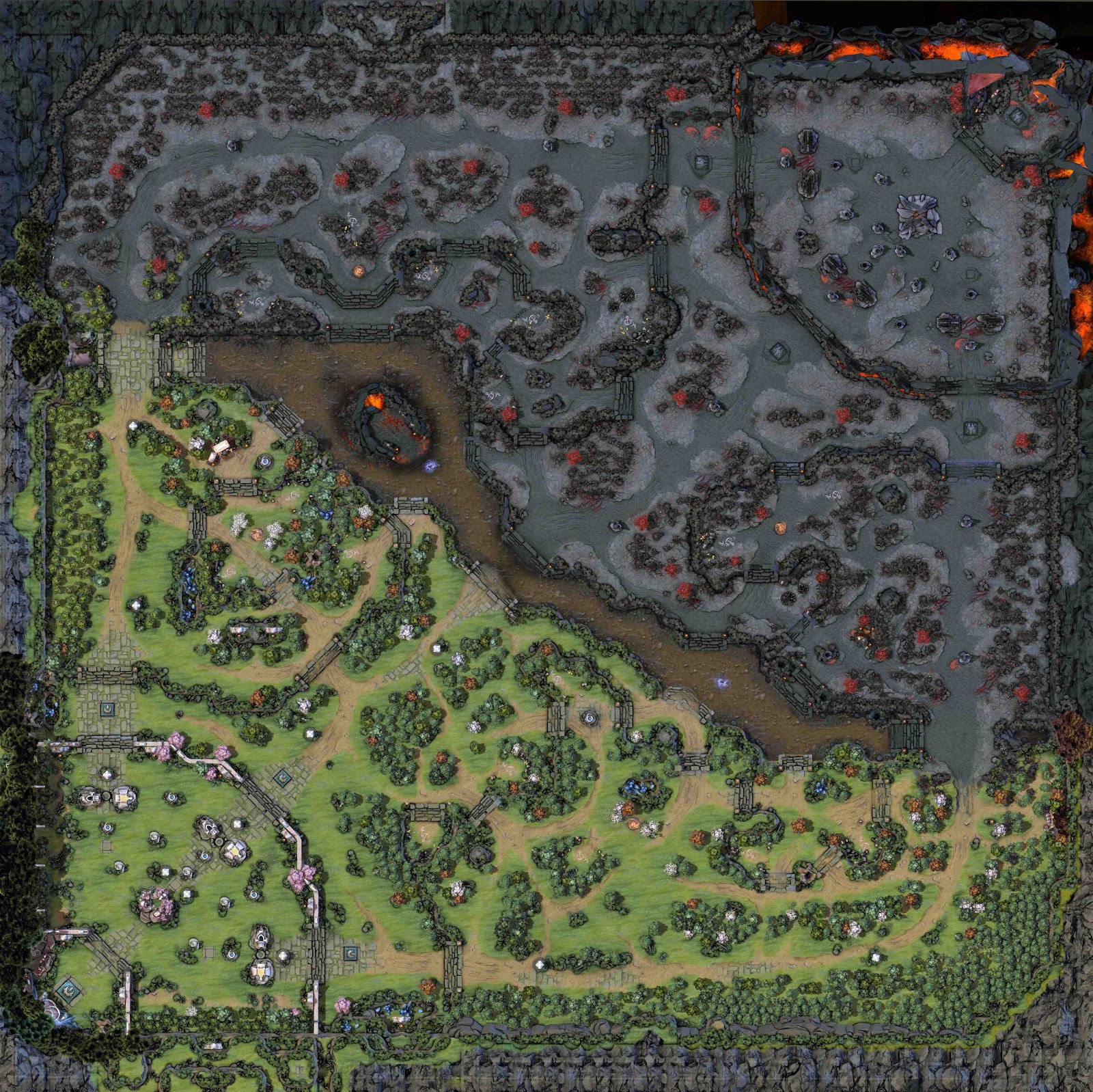
The map
Like chess, Dota 2 is all about the board state, or rather, the map state. The game takes place over a battlefield and imitates war, in a sense. The lush, green side of the map is the Radiant, while the decrepit trees and scorched earth denote the Dire. Each team selects a side of the conflict to represent, with one goal in mind: Destroy the other’s ancient, the massive building in the heart of either base.
The distance between the bases is linked by three lanes, referred to as top, middle and bottom (shortened to top, mid and bot). A river divides the Radiant and Dire sides, and between the lanes there are trees and camps filled with neutral monsters who attack when provoked. Since these woods, called the jungle, provide monsters and more avenues for assault and escape, each team has a safe lane and a hard or “off”-lane.
Every 30 seconds, minions spring forth from each base and run mindlessly down each lane to assault the enemy’s keep, held back by giant, tiered defensive towers.
Kills and deaths are important, but the only path to victory outside an early forfeit is through destroying the enemy ancient. Map control is key, so for newcomers unfamiliar with the game, it’s easier to keep track of objectives on the map.
Which towers are being pushed, and which aren’t? Is a team focusing on one lane over another? It’s hard to learn to read the negative space as much as what’s actually on the map, but seeing where large waves of minions are crashing can help give you a sense of which team has the lead. Commentators will also help by noting net worth differences, and there’s a new graphic this year that keeps track of which team has the gold advantage. Generally, anything over a 5k gold lead means one team is solidly ahead of the other.
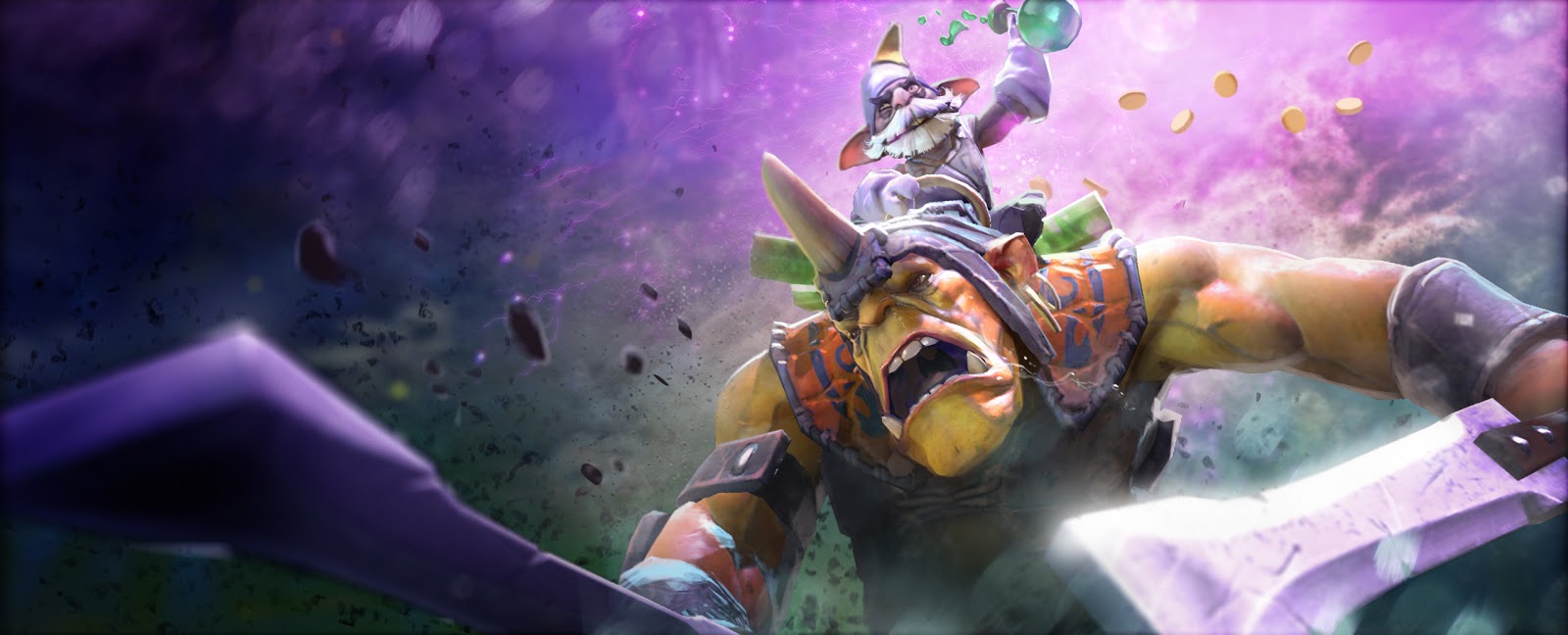
Gold and experience
Gold is power in Dota 2. Teams gain power through gold, because gold allows them to buy items. Some heroes can go without, some heroes require it, but everyone benefits from a healthy stream of gold income. Experience points are also vitally important to each player. Experience is a nebulous good that increases a hero’s level, giving them more damage, health, mana for spells, and points to spend on increasing their abilities or adding new ones to their arsenal.
These two critical currencies are obtained through simple means. Anything, from minions to heroes, will give experience to heroes when it dies, and gold is awarded to whoever lands the last hit. Now, this is Dota, so there are caveats. Heroes can “deny” (land the last hit on) their own team’s minions to lessen the experience the other team gets and deny their bounty. The overarching theme is the more things you kill, be it minions, heroes, monsters or towers, the more powerful you become.
At a high level of play, Dota 2 teams try to sabotage their opponent’s economy while enlarging their own. A common phrase is that some heroes, both literally and figuratively, “need space” to work. A Spectre or Medusa is more fragile than other heroes to start, and needs a lot of time and “farm” from killing minions, monsters or heroes in order to get the items and experience they need to shine. It’s why damage-dealing heroes are often referred to as cores or carries — they’re the key to dealing out damage and killing the enemy team, and can “carry” a team on their backs to a win.
These core heroes are powerhouses, but since they need big items to be effective, it’s up to the supports to get them there. Where cores bring the damage, supports bring the utility, using stuns, slows and spells to control the battle. If the core is the player scoring, the supports are the players on the outside, blocking and making the assists.
That hierarchy defines team composition and structure, which the Dota community breaks down using 1-2-3-4-5. The one, two and three-role players need gold and experience the most, while the four and five-role can go without for the betterment of the team. When early game fights are happening, watch which team’s carries live and die. A death not only takes away some of your stashed gold, but takes you off the map for a short time, losing valuable time that the other team’s carries will be using to bulk up.
Putting it all together
All these separate concepts — cores and supports, gold and experience — combine to form (in most cases) one cohesive game plan. Some teams might orient themselves towards an early-game strategy, where they use heroes such as Drow Ranger to push early and take objectives. Others might look for a fighting composition, preferring to kill heroes and demolish the opponent’s economy.
Remember, the key to winning is the throne. To win the game, a team has to push their way into the base and take down the Ancient, whether by having strong siege heroes or literally killing the other team, wiping out the main source of opposition. While some strategies excel in the early or mid-game, others might take a while to get going. Some heroes, such as Tinker and Nature’s Prophet, are very good at split-pushing — taking objectives and moving down one lane while the enemy team is occupied somewhere else. To counter, the other team might draft a hero like Storm Spirit, who can hunt down and kill these mobile heroes.
It’s all in the back-and-forth, and especially during a long series, you will see teams adjust to each other’s strengths and weaknesses, like changing defenders on a strong player mid-game. You don’t need to get all of this to get excited over a big mess of a teamfight, but it’s what fills the in-between, and it’s what a lot of long-time Dota 2 fans love to talk about during the lulls between big team clashes.
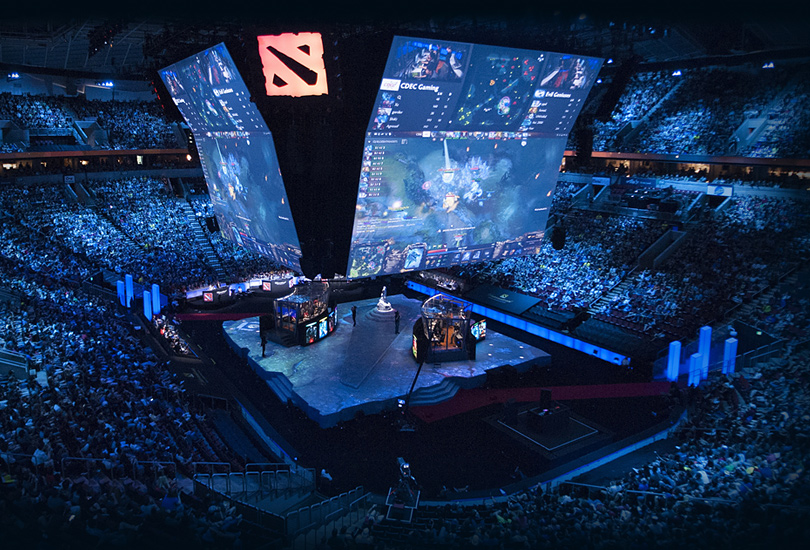
What’s special about TI?
The International plays out a little like the World Cup. Eighteen teams assemble in Seattle to play in the group stages. Split into two groups of nine, everyone plays and the bottom team from each group is cut, leaving 16 to move on to the main event in Key Arena, where they will play out a double-elimination bracket.
Since TI7 has a prize pool of over $29 million at this point, any team even within the top eight gets to take home a significant check. Expect plenty of strategies to develop and be toppled in the span of six days — when Dota teams play each other for that long, they start to develop a rapport with each other and build catered strategies for each opponent if they didn’t already have one.
This is the biggest event in esports in terms of prize money, and the level of play matches it. While Dota 2 can be, at times, inscrutable, it’s also led to many incredible plays, like TI5’s Six-Million Dollar Echo Slam or a counter-draft so ubiquitous in Dota history, it’s simply known as The Play.
So Eric, who do I root for?
Well, that’s a complicated question. There are many reasons that fans root for any given team, whether nationalism, a favourite player, or just liking one team’s logo a lot. I, like many other Dota players, got hooked on Natus Vincere thanks to Danil “Dendi” Ishutin’s impeccable Pudge play. Here’s a few rosters that have been making waves, and some easy reasons to cheer for them.
EG: The hometown heroes and North America’s best shot at not just a winner, but a repeat winner. Evil Geniuses took the top prize in 2015 and are in the upper bracket coming out of this year’s group stages, so they have a pretty strong shot at the finals. Keep an eye on Sumail in the mid lane, as well as Saahil “Universe” Arora’s excellent offlane play.
TNC: The most likely underdog to make it deep into the bracket, this Southeast Asian team is carrying the banner for their region at TI7. Finishing in the upper bracket is one thing, but TNC’s unique style of Dota is often a joy to watch, and this team is likely the biggest chance for SEA to finally make it to an International grand finals.
LGD FY: A sister squad to the main LGD team, Forever Young had one of, if not the, strongest showings in the group stage. I love a team with a good roaming four-role support, so Tue “Ahfu” Soon Chuan is my player to watch here. If he gets Night Stalker in a draft, the other team made a huge mistake.
Cloud9: Another American squad, the team formerly known as NP are now under the Cloud9 banner again but struggled in their early group stage matches. They avoided elimination, but are now just a few games away from dropping out. Jacky “EternalEnVy” Mao is known for his odd builds and overreaching gameplay, but will that risk-reward pay off or send Cloud9 packing? If you’re looking for a team whose storyline most resembles a sports anime, this is your roster.
There’s plenty of other fantastic stories coming in as well, such as Team Secret’s newfound success with MidOne and dual Major winners OG dropping to the lower bracket. There’s really no wrong answer, as all 16 teams have proven themselves as some of the best in the world at Dota 2, and will settle that debate for at least a few beautiful days starting today.
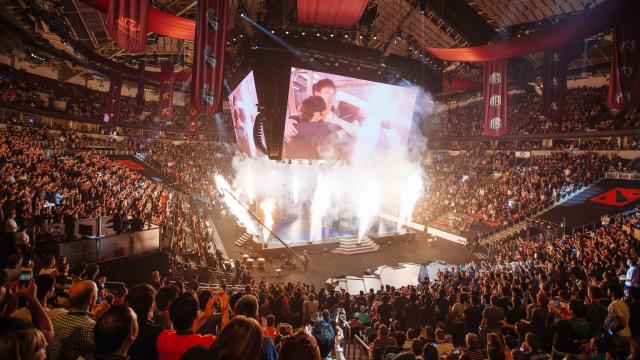
Comments
2 responses to “A Newcomer’s Guide To Watching Dota 2’s $29 Million International Tournament”
The prize pool in client is only just hitting 24 million, where is the extra 5 coming from?
US to AUD conversion, calculated at the time of writing.